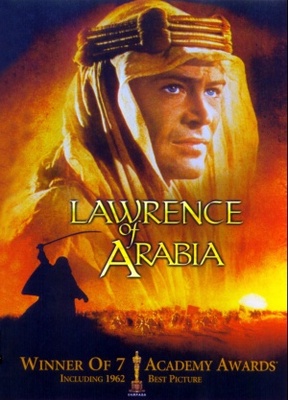
“Lawrence of Arabia” is an epic historical drama directed by David Lean and starring Peter O’Toole as T. E. Lawrence. The film is divided into two acts, each focused on Lawrence’s experiences in the Middle East during World War I.
Part 1: The Arab Revolt
The first act of the film introduces us to T. E. Lawrence, a British officer stationed in Cairo, Egypt during World War I. Lawrence is tasked with the mission of assessing the situation in Arabia, where a group of Arab leaders is rebelling against the Ottoman Empire.
Lawrence quickly becomes fascinated with the Arab people and their struggle for independence. He takes it upon himself to help the Arab rebels, and convinces the Arab leader, Prince Feisal, to launch an attack on the Ottoman stronghold of Aqaba.
With the help of a small group of Arab fighters, Lawrence leads a daring and successful assault on Aqaba. The victory inspires the Arab people and establishes Lawrence as a hero and a legend.
Part 2: The Desert Journey
The second act of the film focuses on Lawrence’s attempts to unite the Arab tribes and create a powerful force to fight against the Ottomans. He is joined by a British officer named General Allenby, who recognizes Lawrence’s importance and offers him support.
However, Lawrence soon becomes disillusioned with the brutal nature of war and the political maneuverings of the British officers. He is haunted by the violence he has witnessed and the atrocities committed by both sides.
Lawrence sets out on a dangerous journey through the desert, accompanied by a guide named Tafas. The journey is long and arduous, and Lawrence is forced to confront his own doubts and fears.
The film’s final scene shows Lawrence back in Cairo, meeting with Allenby and the British officials. Lawrence’s attempts to create a united Arab front have failed, and he is left feeling disillusioned and betrayed.
Review
“Lawrence of Arabia” is a 1962 British epic historical drama film directed by David Lean and starring Peter O’Toole, Alec Guinness, and Omar Sharif. The movie tells the story of T. E. Lawrence (Peter O’Toole), a British Army officer who becomes involved in the Arab Revolt against the Ottoman Empire during World War I. Through his leadership and bravery, Lawrence inspires the Arab tribes to fight for their independence, but his efforts are ultimately betrayed by the British government.
The film is a stunning visual masterpiece, with its sweeping desert landscapes, grand battles, and complex characters. It is widely regarded as one of the greatest films ever made and a defining work of the historical epic genre.
One of the most striking aspects of the film is its use of cinematic language, as discussed by David Bordwell. The movie’s visuals are stunning, with Lean using wide shots and vast landscapes to capture the grandeur of the Arabian desert. The use of close-ups is also noteworthy, as it creates an intimate connection between the audience and the characters, emphasizing their emotional depth and complexity.
Marcel Martin’s concept of character arc is also evident in the movie, with Lawrence’s transformation from a disillusioned soldier to a charismatic and heroic leader providing a central focus for the film. The movie’s exploration of Lawrence’s psyche, his motivations, and his inner demons is an example of complex and nuanced character development that adds emotional depth to the story.
The film’s score, composed by Maurice Jarre, is a standout element of the movie, with its sweeping themes and stirring melodies adding to the film’s emotional resonance. The use of music as a storytelling device is particularly effective in the film’s climactic scenes, adding a layer of emotional depth to the already powerful visuals and performances.
The movie’s stunning visuals, adherence to storytelling principles, and complex character development make it a must-watch for any fan of the epic historical genre. It is a testament to the enduring power of cinema to capture the human experience on a grand scale, and a defining work of one of the most influential periods in film history.